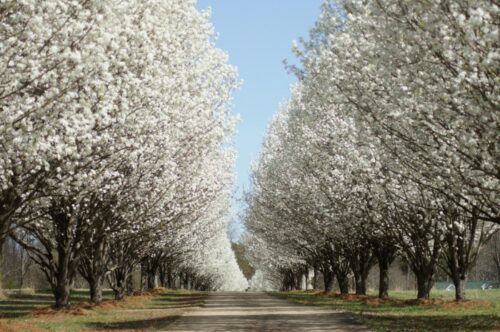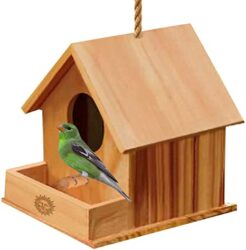Facts about Bradford Pear Trees. The Bradford pear tree is well-known for its dense and attractive flower blooms. It is a deciduous tree.
It is reputed for its ornamental value rather than the production of fruits.
Belonging to the Rosaceae family, it is known as Pyrus calleryana botanically.
Below, we have mentioned some interesting facts about these trees.
Facts about Bradford Pear Trees.
The height of the tree is usually 15 – 20 meters and it has a rounded or sub-rounded crown.
Leaves of the tree are glossy, broad, and thin and consist of double-toothed edges.
Their fruits do not come with any husk and are rounded having a diameter of about 1 cm.
The tree’s bark is usually brown and has horizontal lenticels.
During summer, the foliage is dark green.
And in autumn, the leaves depict a variety of colors.
Which range from pink and red to bronze.
In North America, the tree is used mainly for commercial purposes and isn’t native.
Since they are known for their ornamental purposes.
This tree has various cultivators where it is grown commercially.
Facts about Bradford Pear Trees.
Among them, the most well-known are Bradford, Whitehouse, Chanticleer.
Also, Cleveland Select, Aristocrat, Autumn Blaze, Capital, New Bradford, plus Redspire.
CHARACTERISTICS OF THE BRADFORD PEAR TREE.
Bradford pear trees is actually native to Japan, China, Korea, Vietnam, and Taiwan.
Same as the refined variation of the Callery pear which is noted for ornamental value.
This tree will be able to grow on any type of soil.
And will be able to survive in areas which are partly shaded although bright sunlight is preferred by it.
Fertilizers which are nitrogen-based are ideal for this tree.
Deep root fertilization like worm castings are considered to be extremely useful.
Since they help to enhance the quality of the soil.
The Bradford pear tree is known to flower early and sometimes, even prior to the leaves.
It is also well-known for branching in a broad and dense manner.
Sticky pollen is produced by the tree which is not blown away easily by the winds.
Since they are sticky in nature, increasing numbers of flies are attracted instead of bees for pollination.
In case the trees are not pruned on time.
They tend to fork out in an uneven and weak manner thus cramping the surrounding area or trees.
Likewise crowd the native plants.
Which already exist when they are planted in areas where they are not native.
They affect the biodiversity of the region directly.
This tree is susceptible to thunderstorms or heavy snowstorms because of its weak outgrowth.
Therefore, it is not possible to plant these trees at greater altitudes.
The tree is extremely pest-resistant, and it is not usually affected by many diseases except a few.
Leaf blackening, particularly on the underside, is a sort of leaf scorch which is a result of root stress issues.
Even though new Bradford cultivators are fire blight-resistant in most cases.
They ought to be guarded properly from it.
A bacterium causes the fire blight disease which tends to blacken the ends of leaves and twigs.
And this might spread to the fruits and flowers too.
The tree can also contract a sort of fungus known as Entomosporium Leaf Spot.
Particularly during spring and fall. One early symptom is when the young leaves begin to show reddish-colored spots.
Along the base and on their surfaces. Following this, the mature leaves show gray spots.
Which develop afterward into black blotches that can affect the whole leaf.
However, it is feasible to control this fungal growth.
Making use of a sufficient and appropriate quantity of fungicide.
Thus, it is always recommended that one ought to search for better alternatives.
With other cultivators in case he wants to go for a Callery pear tree.
BRADFORD PEAR TREE PROBLEMS.
The Bradford tree has a number of downsides.
Which the homeowners must be careful of while deciding whether to remove them or keep them.
Below, we have mentioned some of the major Bradford pear tree problems.
1. FEEBLE BRANCHES.
Although these trees can grow to a height of even 40 feet quite quickly.
The branches are quite thin which are vulnerable to strong winds.
For instance, there is a possibility for the branches to break and fall down on the front lawn.
Of yours or even on the nearly power lines in case the wind reaches a speed of 40 mph or even more.
This can lead to power outages, and on some occasions, somebody might become injured as well.
2. SMELL.
The Bradford trees do not smell nice and are similar to the odor of fish decomposing on a bank.
You will not like this smell while venturing out somewhere including your workplace.
In fact, the tree has been coined in the Urban dictionary as the “semen tree” due to its terrible smell.
3. ABSENCE OF ANY GRASS.
While consisting of feeble branches, the Bradford pear tree is nevertheless quite dense.
This implies that it is not possible for the sun to penetrate the branches.
As a result, any grass below the tree will not receive the necessary nutrients for growth.
Sometime you will not like the idea of grass not growing in your yard unless, of course.
You are habituated to living in desert-like conditions.
4. THE FRUITS ARE NOT EDIBLE.
Although a pear tree ought to bear edible fruits.
The fruits of the Bradford pear cannot be consumed.
It is not possible for humans to eat them.
These are also poisonous for dogs.
It likewise creates an issue for the lawnmowers since the fruit is quite hard.
BRADFORD PEAR TREE LIFESPAN.
It is a fact that the Bradford pear trees provide lots of charm to many landscapes across the country.
However, these trees suffer from one significant flaw.
Because of their combination of feeble wood, vigorous growth, and poor structure of the branches.
They usually tend to fall apart after approximately 20 years.
It is more likely that these trees will not be able to remain intact during their expected lifespans.




